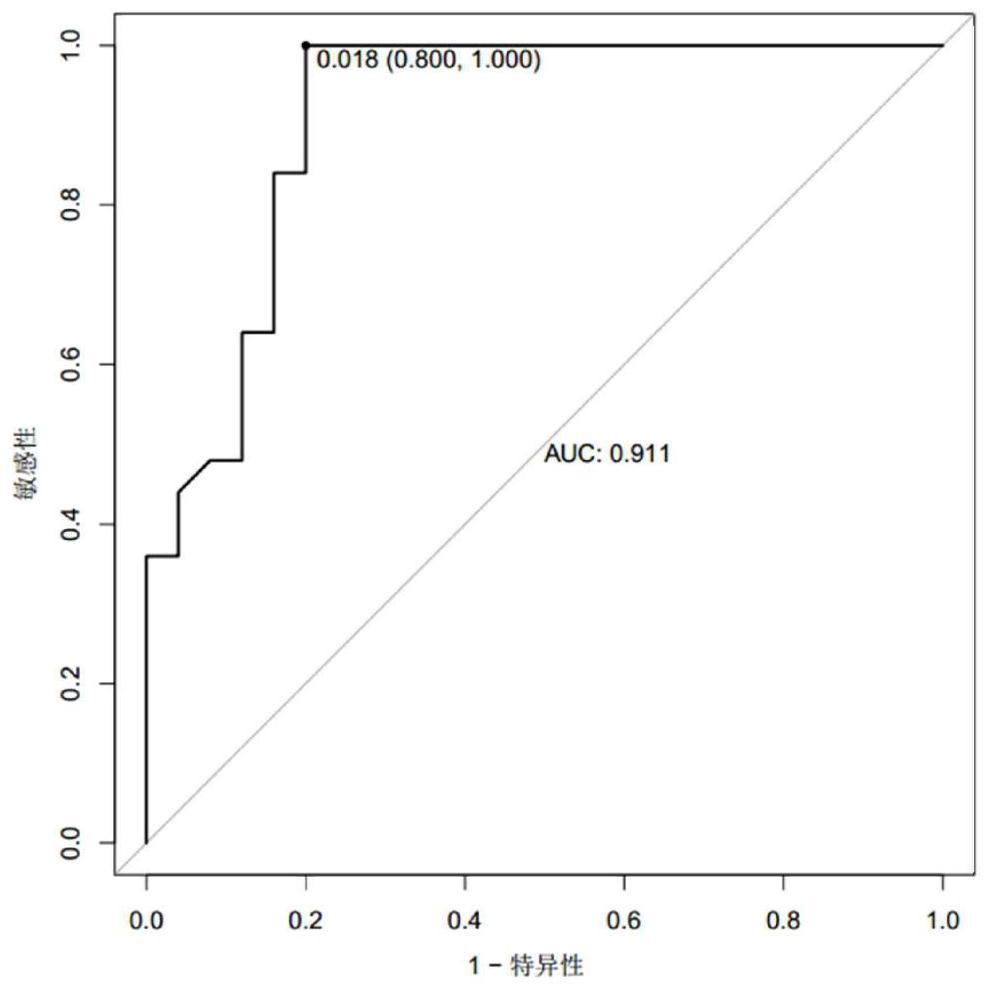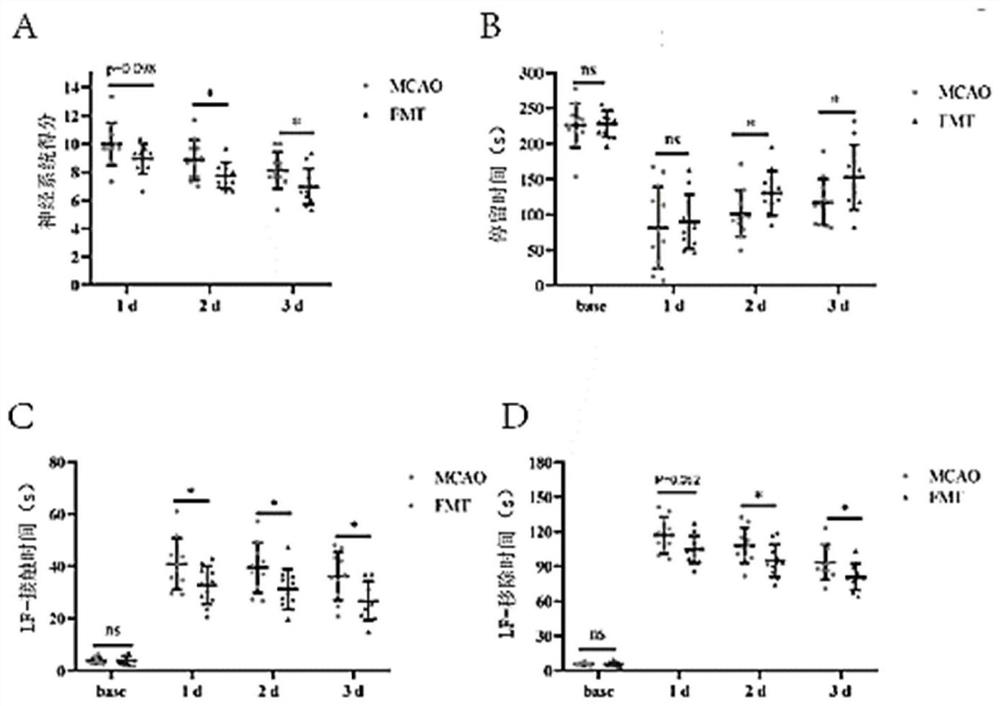Application of microbial markers in the diagnosis and treatment effect evaluation of cerebral infarction
A technology of cerebral infarction and reagents, applied in the field of biomedicine, can solve the problems of high risk, difficult treatment, and high recurrence rate of cerebral infarction
- Summary
- Abstract
- Description
- Claims
- Application Information
AI Technical Summary
Problems solved by technology
Method used
Image
Examples
Embodiment 1
[0049] Example 1 Biomarkers associated with cerebral infarction
[0050] 1. Experimental animals
[0051] Adult male C57BL / 6 mice (body weight 23.0 to 26.0 g, 8 to 12 weeks old) of a specific pathogen-free grade were purchased from Beijing Weitong Lihua. All C57BL / 6 mice were kept under specific pathogen-free conditions with relatively constant humidity (60%±5%) and temperature (22°C±3°C), light time of 12h / dark time of 12h, all Animals were given free access to food and water. The model of focal cortical cerebral infarction in mice was established by electrocoagulation, and the mice were randomly divided into two groups, the control group (pMCAO, 25 rats) and the medication group (25 rats).
[0052] 2. Drug intervention: Atorvastatin (Pfizer, USA) was dissolved in 0.9% normal saline at a concentration of 2 mg / ml. Give the drug 20mg / kg / d by intragastric administration. The cerebral infarction group was treated with an equal volume of normal saline. Fecal samples of the mi...
Embodiment 2
[0091] Embodiment 2 feces transplant experiment (FMT)
[0092] Fecal material from atorvastatin-treated mice was collected under aseptic conditions, and feces (0.1 g) from donor mice were mixed and suspended in 1 ml sterile PBS. The mixture was mixed for 15 s using a benchtop vortex (Vortex-Genie 2, Science Industries, USA), centrifuged at 800 g for 3 min at room temperature, and 500 μL of the supernatant was orally administered to PMCAO mice (n=12). Fresh feces were prepared on the day of fecal transplantation, within 15 minutes before gavage. Neurobehavior of FMT mice was measured and compared with pMCAO group (n=12).
[0093] The result is as image 3 As shown, after fecal transplantation, the neuroethology of mice was improved and the mNSS score was reduced ( image 3 A), increased Rotarod round time ( image 3 B), reducing the contact time in the adhesion removal experiment ( image 3 C) and removal time ( image 3 D).
PUM
 Login to View More
Login to View More Abstract
Description
Claims
Application Information
 Login to View More
Login to View More - R&D
- Intellectual Property
- Life Sciences
- Materials
- Tech Scout
- Unparalleled Data Quality
- Higher Quality Content
- 60% Fewer Hallucinations
Browse by: Latest US Patents, China's latest patents, Technical Efficacy Thesaurus, Application Domain, Technology Topic, Popular Technical Reports.
© 2025 PatSnap. All rights reserved.Legal|Privacy policy|Modern Slavery Act Transparency Statement|Sitemap|About US| Contact US: help@patsnap.com



